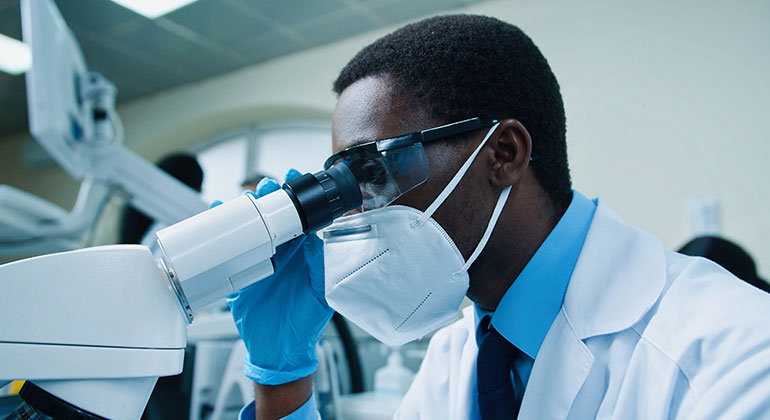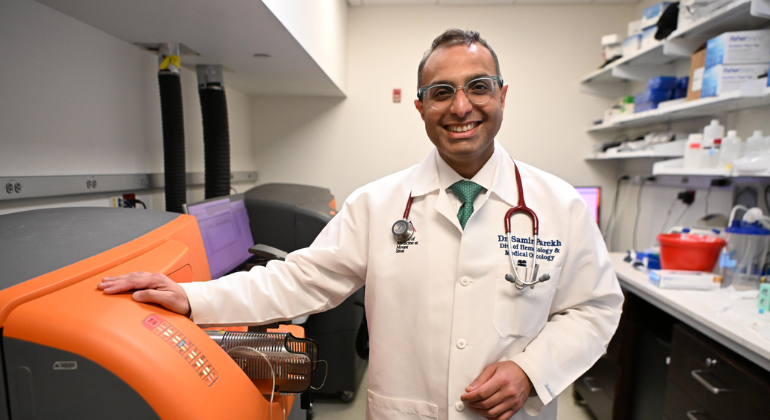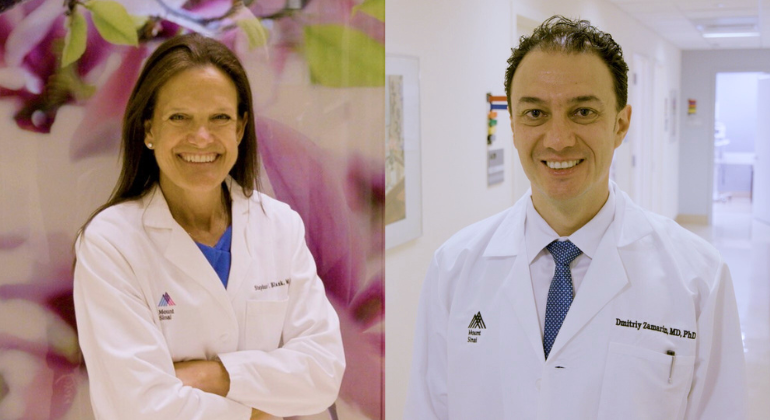Redefining a Positive CT Result for Lung Cancer May Reduce Unnecessary Surgery, Radiation Risks
Revising a key measure used to define positive test results in baseline computed tomography (CT) screenings for lung cancer could help reduce the prospect of “further diagnostic work-up."
Revising a key measure used to define positive test results in baseline computed tomography (CT) screenings for lung cancer could help reduce the prospect of "further diagnostic work-up," according to a new study by researchers at the Icahn School of Medicine at Mount Sinai. The study, which is the latest report from the International Early Lung Cancer Action Program (I-ELCAP), is published Tuesday, February 19 in the journal Annals of Internal Medicine.
In CT screening for lung cancer, the positive result of the initial low-dose CT indicates whether further diagnostic work-up is needed before the first scheduled repeated screening. Currently, our threshold for defining a positive result is 5 mm. Using a threshold of 7 or 8 mm to define a positive lung cancer result in a baseline round of computed tomography (CT) could substantially decrease unnecessary workup of nodules that are not malignant. However, additional prospective research is needed to determine the extent to which increasing the threshold may delay diagnosis of cancer in some patients.
"Over the past decade, due to advancements in CT technology and our increased knowledge, the frequency of identifying a noncalcified nodule (NCN) of any size on the initial baseline CT scan has almost tripled, said Claudia I. Henschke, PhD, MD, Professor of Radiology at the Icahn School of Medicine at Mount Sinai and I-ELCAP principal investigator. "Using too small of a measurement to define a positive result may cause excessive diagnostic work-up and unnecessary treatment, while using too large of a measurement may delay diagnosis."
"We feel that nodule size, including volume, remains the most useful and reproducible metric of the most benefit to our patient population," added Dr. Henschke. "Just as the definition of a positive result has been revised in the past to reflect updated data, we feel it is again time to use the information at our disposal to create a more restrictive definition."
Researchers reviewed medical records for a cohort of 21,136 patients who had a baseline CT performed between 2006 and 2010 to assess how using a more restrictive threshold in the baseline round of screening would affect the number of positive results and delayed diagnoses. Of the participants undergoing baseline screenings, 57 percent had at least one NCN discovered. Using the current definition of 5 mm, 16 percent (3,396 of the 21,136 patients) had a positive result of the baseline screening. Among those whose largest nodule was between 5-9 mm, 8 were diagnosed with lung cancer within 12 months of baseline enrollment. Increasing the threshold to 6, 7, 8, and 9 mm would have lowered the frequency to 10, 7, 5, and 4 percent respectively, thus decreasing further work-up by 36, 56, 68, and 75 percent respectively.
"Changing the size threshold for a positive screening could help reduce the harms associated with unnecessary work-up," said Dr. Henschke. "I can't say with certainty what the best definition of a positive result is, but our data provide the basis for contemplation and re-evaluation."
I-ELCAP is an international collaborative group of more than 60 participating institutes consisting of experts on lung cancer related diseases. Previous research from the group found that lung cancers detected through CT screening have an 80 percent estimated cure rate compared to a 10 percent cure rate for lung cancers detected in the clinical setting in the absence of screening.
Lung cancer accounts for more annual deaths than colon, breast, and prostate cancers combined. The American Cancer Society estimates that in 2012, approximately 226,160 new cases of lung cancer will be diagnosed in the United States and 160,340 Americans will die from the disease.
About The Mount Sinai Medical Center
The Mount Sinai Medical Center encompasses both The Mount Sinai Hospital and Icahn School of Medicine at Mount Sinai. Established in 1968, the Icahn School of Medicine is one of the leading medical schools in the United States, and is noted for innovation in education, biomedical research, clinical care delivery, and local and global community service. It has more than 3,400 faculty in 32 departments and 14 research institutes, and ranks among the top 20 medical schools both in National Institutes of Health (NIH) funding and by U.S. News & World Report.
The Mount Sinai Hospital, founded in 1852, is a 1,171-bed tertiary- and quaternary-care teaching facility and one of the nation's oldest, largest and most-respected voluntary hospitals. In 2012, U.S. News & World Report ranked The Mount Sinai Hospital 14th on its elite Honor Roll of the nation's top hospitals based on reputation, safety, and other patient-care factors. Mount Sinai is one of 12 integrated academic medical centers whose medical school ranks among the top 20 in NIH funding and by U.S. News & World Report and whose hospital is on the U.S. News & World Report Honor Roll. Nearly 60,000 people were treated at Mount Sinai as inpatients last year, and approximately 560,000 outpatient visits took place.
For more information, visit http://www.mountsinai.org/.
Find Mount Sinai on:
Facebook: http://www.facebook.com/mountsinainyc
Twitter @mountsinainyc
YouTube: http://www.youtube.com/mountsinainy
# # #
About the Mount Sinai Health System
Mount Sinai Health System is one of the largest academic medical systems in the New York metro area, with 48,000 employees working across seven hospitals, more than 400 outpatient practices, more than 600 research and clinical labs, a school of nursing, and a leading school of medicine and graduate education. Mount Sinai advances health for all people, everywhere, by taking on the most complex health care challenges of our time—discovering and applying new scientific learning and knowledge; developing safer, more effective treatments; educating the next generation of medical leaders and innovators; and supporting local communities by delivering high-quality care to all who need it.
Through the integration of its hospitals, labs, and schools, Mount Sinai offers comprehensive health care solutions from birth through geriatrics, leveraging innovative approaches such as artificial intelligence and informatics while keeping patients’ medical and emotional needs at the center of all treatment. The Health System includes approximately 9,000 primary and specialty care physicians and 10 free-standing joint-venture centers throughout the five boroughs of New York City, Westchester, Long Island, and Florida. Hospitals within the System are consistently ranked by Newsweek’s® “The World’s Best Smart Hospitals, Best in State Hospitals, World Best Hospitals and Best Specialty Hospitals” and by U.S. News & World Report's® “Best Hospitals” and “Best Children’s Hospitals.” The Mount Sinai Hospital is on the U.S. News & World Report® “Best Hospitals” Honor Roll for 2025-2026.
For more information, visit https://www.mountsinai.org or find Mount Sinai on Facebook, Instagram, LinkedIn, X, and YouTube.
Mount Sinai’s Staten Island Cancer Center Moves to New Site
Nov 09, 2023 View All Press Releases
Researchers Find Treatment Options for Patients Whose Blood Cancer Relapses After CAR-T
Nov 04, 2022 View All Press Releases
Study Identifies New Gene That Drives Colon Cancer
Oct 14, 2022 View All Press Releases




